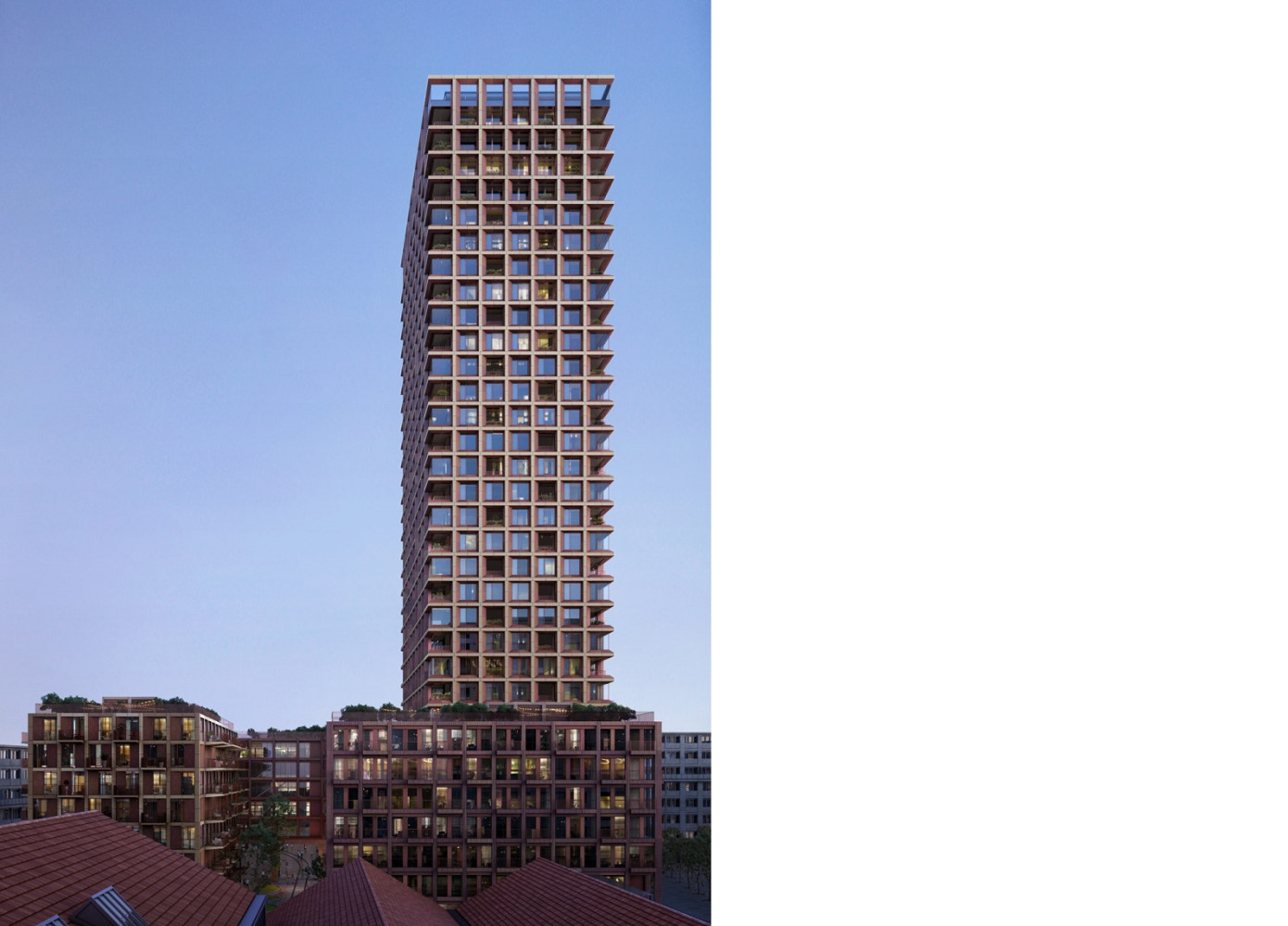Over the next four years, the world’s tallest residential building with a load-bearing structure in wood will rise above the ridges in the Swiss city Winterthur, close to Zürich. The 100-meters-tall tower, Rocket&Tigerli, is named after locomotives produced at the previous industrial site.
The project marks a milestone in the construction of timber buildings – it introduces an innovative construction system that examines wood as a natural replacement for concrete. The Swiss company Implenia and the Swiss Federal Institute of Technology of Zürich, ETH, have worked together in developing the new system, which allows the construction of taller timber buildings.
The concrete core has been replaced with wood, resulting in the individual beam coming in at a lower weight. This makes it possible to build taller constructions while, at the same time, ensuring that the entire building process achieves a lower amount of embedded carbon.

The Danish architectural firm, Schmidt Hammer Lassen (SHL) won the international competition by celebrating the construction itself, highlighting the wooden beams as distinctive elements that give the users a feeling of living alongside the construction itself.
In the design of the residential units, SHL challenges the classical high-rise typology by focusing extensively on the integration of daylight and spaciousness. This results in apartment spaces showered in daylight with double height. All residential units are angled to make most of the inflow of daylight and are designed with a high level of flexibility allowing the spaces to adapt to future needs.
Upon its realisation, the tower will seem like a natural continuation of the surrounding architecture. The façade will be covered in dark red and yellow terracotta bricks combined with details in dusty green; a colour palette that reflects the red roofs and yellow bricks of the historical buildings in the area.
From considering wood as a natural material, traditionally used in cottages and holiday houses, the material is now being treated with focus on its eminent qualities in relation to a building’s total energy consumption. Innovative construction technologies allow the wood to join the mainstream in the built environment both when it comes to all timber constructions, and when it comes to hybrids between timber and concrete constructions.
Rocket&Tigerli is expected to be completed and ready for residents to move in to by 2026.

